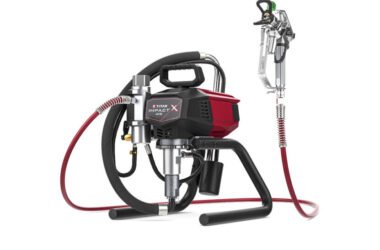Redesigning your kitchen is an exciting opportunity to shape a space that is both practical and visually stunning. One of the most crucial decisions in this process is selecting the right kitchen cabinets. Whether you’re aiming for a traditional look or an ultra-modern vibe, your choices will define the tone of your cooking space. For those exploring open-concept kitchen remodeling, selecting versatile cabinetry takes on added importance, melding visual flow with accessibility in today’s popular open layouts.
With so many styles, materials, and features available, striking the right balance between beauty and functionality can be daunting. The following guide breaks down the key steps and considerations to help you build an inviting and supremely user-friendly kitchen.
Assess Your Kitchen Layout and Space
Start by objectively evaluating your kitchen’s layout and available space. The size and configuration of the area—whether U-shaped, L-shaped, galley, or island-based—will impact the optimal cabinet arrangements. U- and L-shaped kitchens naturally lend themselves to ample storage and easy workflows, while galley and straight-line kitchens require clever utilization of vertical and horizontal space.
Define Your Storage Needs
Consider the unique items you regularly use in your kitchen. Begin with a thorough inventory of your cookware, small appliances, dishware, and pantry goods. This inventory informs the types of cabinets and specialty inserts you’ll want, such as deep drawers for pots, narrow pull-outs for spices, or vertical storage for baking sheets. Modern cabinetry offers a wealth of clever organizational add-ons like pull-out shelves and hidden drawers, allowing you to tailor your storage without sacrificing visual appeal.
Choose Quality Materials and Construction
The longevity and resilience of your kitchen depend heavily on the materials used in your cabinets. Solid wood is admired for its classic appeal, but is susceptible to expansion or warping in humid climates. Plywood provides durability and moisture resistance, making it a dependable mid-range option. Medium-density fiberboard (MDF) offers a smooth finish for painted cabinets and resists cracking, though it is more prone to water damage if not properly sealed. Carefully weigh each material’s pros and cons for your climate, family needs, and budget.
Select a Style That Complements Your Home
Kitchen cabinetry should act as a seamless extension of your home’s style. Consider flat-panel doors and integrated handles that create sleek lines for a modern look. Traditional or farmhouse designs often feature raised-panel doors, decorative trims, and rich wood grains. Transitional styles combine simplicity with tasteful details, offering flexibility as trends evolve. Consider your current furnishings, wall color, and flooring to guide your style selection, ensuring all elements work together cohesively.
Opt for a Functional Layout
Layout planning is key to achieving a kitchen that feels as good as it looks. Many designers swear by the work triangle concept—arranging your sink, stove, and refrigerator in a triangular pattern to minimize unnecessary movement. Beyond this classic approach, modern kitchens benefit from designated prepping, cooking, cleaning, and storage zones. This organization streamlines meal prep and improves visual order, especially in open-concept homes.
Consider Color and Finish
Cabinet color and finish directly shape the mood and atmosphere of your kitchen. Timeless neutrals like white, gray, and taupe make spaces appear larger and more inviting. Deep blues, greens, or even matte black cabinetry can establish a dramatic, modern aesthetic. When it comes to finish, glossy surfaces reflect more light but may show fingerprints, while matte or textured finishes are forgiving and offer a subtler appearance. Choose a palette that reflects your taste and consider ease of upkeep if you have a busy household.
Incorporate Sustainable and Innovative Features
Sustainability is increasingly at the forefront of kitchen design. For an eco-friendly statement, look for cabinets made from rapidly renewable resources like bamboo or reclaimed wood. Low-VOC finishes can help reduce harmful emissions in your home. For added function, consider modern touches such as under-cabinet lighting, soft-close hinges, or hidden charging stations to meet the demands of contemporary living.
Plan for Easy Maintenance
Maintenance should never be overlooked. Choose surfaces and finishes that are easy to clean and resistant to scratches or stains. Matte or textured cabinet doors, stainless steel appliances, and quartz countertops all require minimal care while maintaining their appearance over the years of use. Thoughtful choices in backsplash and flooring materials can further reduce daily upkeep, making your kitchen as enjoyable to use as it is to admire.
Thoughtful selection and planning ensure your kitchen cabinetry isn’t just a backdrop but a central, defining feature of your home. Careful attention to layout, materials, style, and details will help you create a welcoming, efficient kitchen you’ll love for years.








